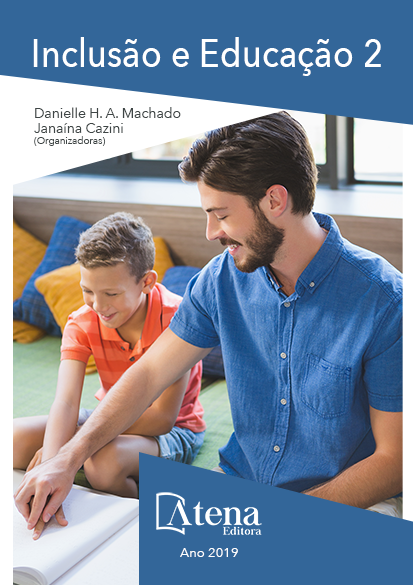
O OLHAR DO OUTRO SOBRE A DIFERENÇA SURDA: REPRESENTAÇOES SOBRE OS SURDOS E A SURDEZ
O presente trabalho tem como
objetivo fomentar uma discussão acerca
das representações da Surdez, discorrendo,
de forma breve, no percurso histórico. Este
artigo busca entender como os Surdos são
representados, propondo-se a uma análise
sobre o ser Surdo enquanto diferença cultural,
assim como sobre a forma desses sujeitos
aprenderem e apreenderem o mundo pela
Língua Brasileira de Sinais - LIBRAS. O
trabalho pretende nos levar a uma reflexão
sobre os modos de apreensão e comunicação
dos indivíduos culturalmente constituídos e
a não compreensão da família, sociedade e
instituições de ensino ao jeito próprio de ser
desses indivíduos enquanto cultura, identidade
e alteridade. Ao Partir do modelo de educação
de Surdos com os olhos voltados para politica
inclusiva, é que se percebe a lacuna por falta
de conhecimento das instituições no que diz
respeito aos Surdos e a Surdez. Discutiremos
sobre a realidade de como estes sujeitos
chegam às escolas e lhes é imposta a língua
oral (português), ou por ignorância ou por não
haver prioridade a uma educação que se adapte
à forma de aprender desses sujeitos, ou ainda,
vendo estes alunos como massa de modelar,
que poderá ser moldado e encaixado dentro dos
padrões de normalidade a partir da imposição de
uma língua pertencente a um grupo majoritário.
A partir da discussão empreendida, concluímos
que, no presente artigo, o meio pelo qual as
pessoas Surdas brasileiras ganharão poder e
força e terão acesso ao conhecimento universal,
é, sem dúvida, a Língua brasileira de Sinais –
LIBRAS. O espaço que deve fomentar essas
discussões é o escolar, a partir da organização
de um currículo que também contemple uma
pedagogia voltada para o aluno Surdo.
O OLHAR DO OUTRO SOBRE A DIFERENÇA SURDA: REPRESENTAÇOES SOBRE OS SURDOS E A SURDEZ
-
DOI: 10.22533/at.ed.3081915016
-
Palavras-chave: LIBRAS. Cultura. Identidade. Diferença. Educação de Surdos.
-
Keywords: LIBRAS. Culture. Identity. Difference. Education of the Deaf
-
Abstract:
The present work has as objective
to foment a discussion about the representations
of the Deafness, briefly speaking, in the
historical route. This article tries to understand
how the Deaf are represented, proposing
to an analysis about being Deaf as a cultural
difference, as well as about the way these
subjects learn and apprehend the world through
the Brazilian Language of Signs - LIBRAS. This
work intends to lead us to a reflection on the
ways of apprehension and communication of
the culturally constituted individuals and the non-comprehension of the family, society
and educational institutions to the proper way of being of these individuals as culture,
identity and otherness. From the model of education of the Deaf with the eyes focused
on inclusive politics, is that the gap is perceived by lack of knowledge of the institutions
with regard to the Deaf and the Deaf. We will discuss the reality of how these subjects
arrive in schools and are imposed on oral language (Portuguese), either through
ignorance or because there is no priority to an education that suits the way of learning
of these subjects, or seeing these students as modeling mass, which can be shaped
and fitted within normality patterns from the imposition of a language belonging to a
majority group. From the discussion undertaken, we conclude that in this article, the
means by which the Brazilian Deaf people will gain power and strength and have access
to universal knowledge is undoubtedly the Brazilian Language of Signs - LIBRAS. The
space that should foment these discussions is the school, from the organization of a
curriculum that also contemplates a pedagogy directed to the Deaf student.
-
Número de páginas: 15
- FRANCISCO UÉLISON DA SILVA


